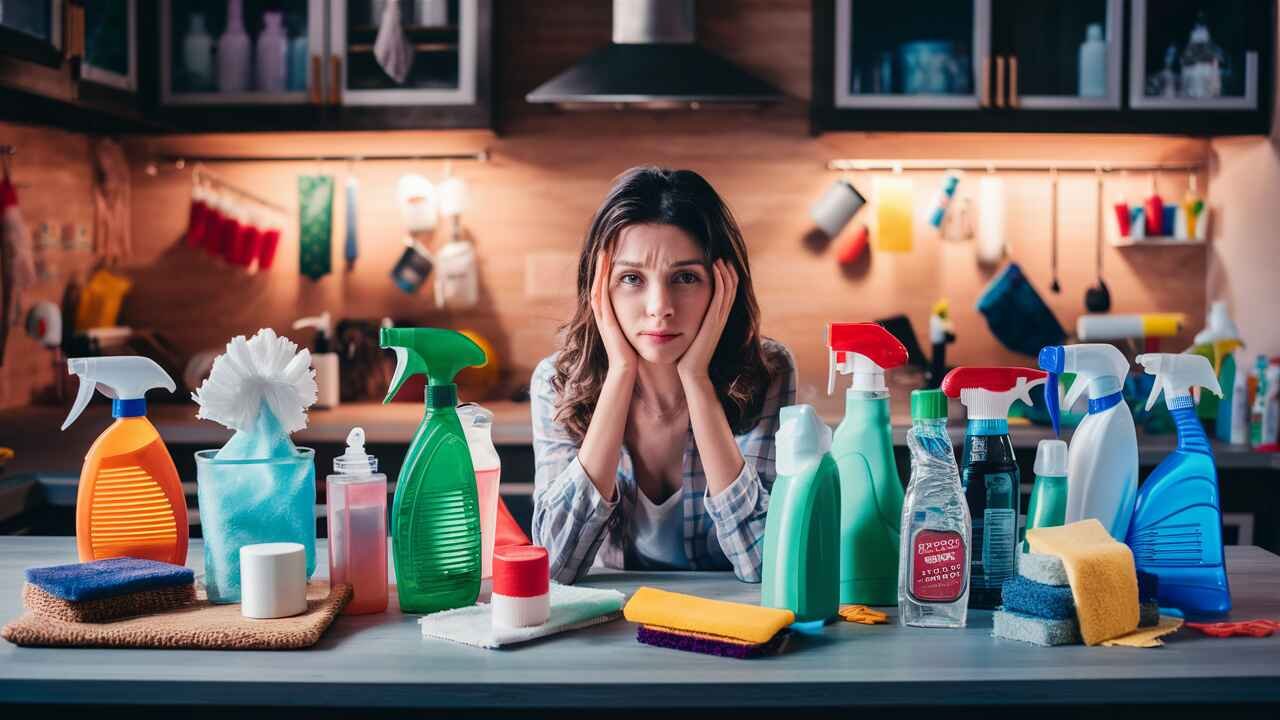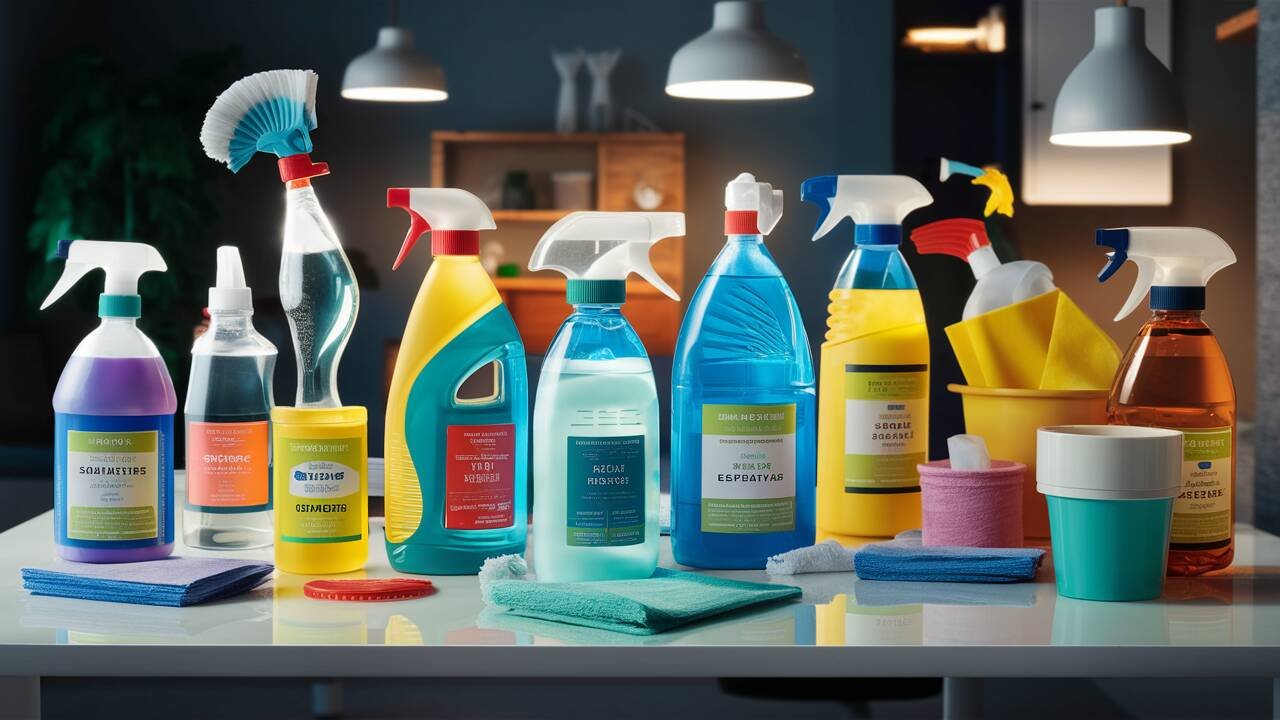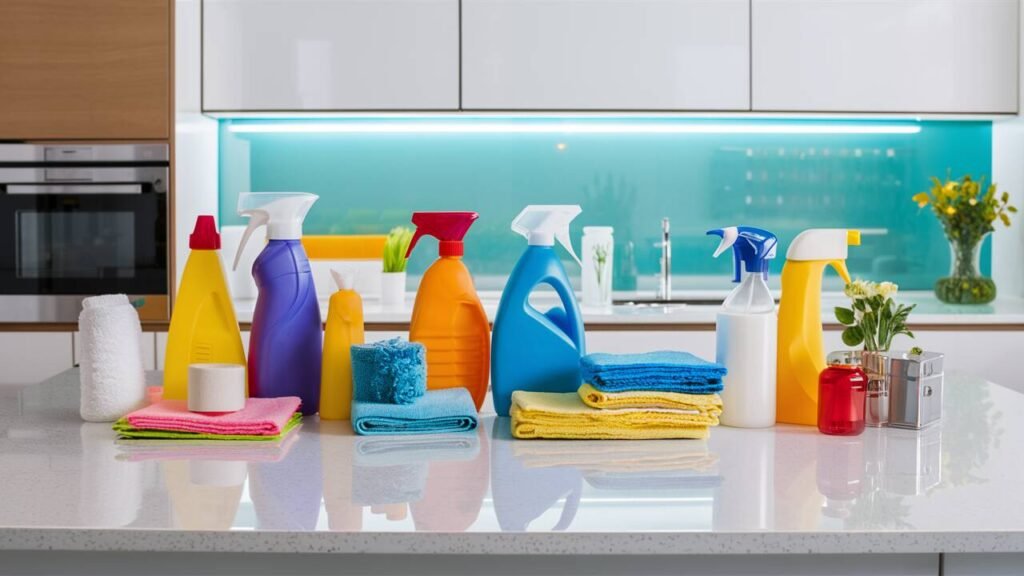So, you’re trying to master the art of disinfecting your home, huh? Well, grabbing some antibacterial wipes and going to town on all those surfaces in your home is a good start. But, it turns out, cleaning alone isn’t gonna cut it. According to the CDC, the tag team of disinfecting and cleaning is what really knocks out those pesky germs. And when you’re cleaning, don’t just swipe and go; make sure you’re doing it according to the manufacturer’s instructions. Even though going full ninja on every spot in your home may seem like a solid plan, some areas just need a good scrub to remove most germs. But when it comes to taking down harmful viruses or bacteria like the norovirus, bring out the big guns—those disinfectant wipes.
Understanding the Difference Between Cleaning and Disinfecting home
So, let’s break down the confusion between cleaning and disinfection. Cleaning your home is all about getting rid of the grime and gunk that you can see. It involves using cleaning solutions to ensure surfaces should be cleaned of any visible mess, like when your kitchen counter is all sticky after you’ve done your baking magic. This cleaning routine basically removes germs because, let’s face it, they stick to the dirt like bees to honey. But, when we talk about disinfecting home, it’s a step further, using stronger stuff to kill those invisible bad boys on surfaces that aren’t necessarily visibly dirty.
Now, if we dive deeper into disinfecting to reduce the spread of germs, we’re talking about using chemicals like sodium hypochlorite in weaker bleach solutions or other cleaning practices designed to sanitize or disinfect. These methods are especially great for those notorious germ hangouts like door handles or the toys your kids love to share with the family dog. But here’s the kicker, for everyday life, going all-out to disinfect toys or your entire home with hardcore disinfection might be overkill. A simple wipe-down with the usual cleaners is enough unless we’re trying to combat a specific ickiness outbreak in the house.
What’s the actual difference between giving your place a clean vs. disinfecting it?
Cleaning refers to the process of removing dirt, dust, and other visible impurities from surfaces. Disinfecting, on the other hand, is the act of killing harmful microbes, viruses, and bacteria on surfaces. While cleaning is important, disinfecting is crucial for eliminating the invisible threats to your health.
Why Both Cleaning and Disinfecting Are Important for Your Home
Cleaning your home removes the visible dirt and grime, but it doesn’t necessarily kill the germs and bacteria that can cause illness. Disinfecting, on the other hand, helps to eliminate these harmful microbes, reducing the spread of illness-causing germs. Together, cleaning and disinfecting create a healthy, safe environment for you and your family.
Choosing the Right Products for Cleaning vs. Disinfecting home

When it comes to cleaning your home, you’ll want to use products designed for cleaning surfaces. For disinfecting, look for products that are EPA-registered disinfectants, which are proven to kill harmful viruses and bacteria. Always read the manufacturer’s instructions and use the products as directed.
How to Effectively Clean and Disinfect Hard Surfaces
When you clean the house, remembering to sanitize and disinfect surfaces is key. Regular cleaning removes dirt, but to kill those pesky germs on surfaces and objects in your home are important, especially if you’re feeling sick or if someone who’s unwell has dropped by. Usually, a deep clean is likely not needed every single time, but making your home match levels public health codes recommend means occasionally you’ll choose to disinfect.
To effectively banish germs, you need to disinfect now and then, particularly in areas that get a lot of touchy traffic. If disinfectants are not available, don’t stress – weaker bleach solutions or sanitizing sprays can come to your rescue. Just make sure the products you use are suitable for the surface and stay wet long enough to do their job. Remember, a full-on blitz with the strongest chemicals is likely not needed unless you’re trying to lower germs to levels public health expects, like when you regularly disinfect or if someone sick has recently visited your home.
The Best Practices for Disinfecting High-Touch Areas
Focus on frequently touched surfaces, such as doorknobs, light switches, countertops, and faucet handles. These areas are more likely to harbor germs and bacteria, so they require extra attention during cleaning and disinfecting home.
Creating a Safe and Effective Bleach Solution According to CDC Guidelines
The CDC recommends using a bleach solution as an effective disinfectant. To make this solution, mix 1/3 cup of bleach per 1 gallon of water. Be sure to follow the manufacturer’s instructions and allow the solution to remain on the surface for at least 10 minutes before wiping.
Cleaning Products You Should Use and Avoid for Disinfecting Home

Avoid using ammonia-based cleaners or products containing phenol, as they can be harmful if mixed with bleach. Instead, opt for EPA-registered disinfectants, disinfecting wipes, or a homemade bleach solution.
Routine Cleaning and Disinfecting Home Strategies
So, you’re probably eyeing up your place thinking, “Time for a major disinfecting home sesh, right?” Hold up a sec. Going full-on cleaner mode on every single corner of your home is likely not needed on the regular. Just focus on the high-touch spots like doorknobs and countertops.
Setting Up a Regular Cleaning Schedule Recommended by the CDC
The CDC suggests cleaning and disinfecting your home regularly, especially during cold and flu season or when someone in your home is sick. Establish a routine that works for your household, and stick to it to maintain a healthy, germ-free environment.
Essentials for your Cleaning Kit: What You’ll Need to Keep Your Home Clean
Stock up on essential cleaning supplies, such as microfiber cloths, paper towels, rubber gloves, and disinfecting wipes or sprays. These items will help you effectively clean and disinfect your home.
Dealing with Electronics: How to Safely Disinfect Your Gadgets
When it comes to electronics, use a soft, lint-free cloth dampened with a disinfecting wipe or a solution of 70% isopropyl alcohol. Avoid getting any moisture in the openings of your devices, and follow the manufacturer’s instructions.
Special Considerations: Disinfecting When Someone in Your Home is Sick
So, if someone in your house catches a bug, disinfecting home surfaces becomes super important. You know, to keep those germs from throwing a party and inviting more of their friends over. It’s like, grab that disinfectant and get to work on doorknobs, countertops, and especially those sneaky remote controls that everyone touches.
Isolating and Cleaning the Sick Person’s Space: Steps to Take Immediate
If someone in your home is sick, isolate their living space and clean and disinfect it more frequently. Focus on high-touch areas, such as doorknobs, light switches, and frequently used surfaces. Use EPA-registered disinfectants or a bleach solution to kill any germs.
Protecting Yourself and Others from Germs When Living with Someone Sick
When caring for a sick family member, wear disposable gloves and wash your hands frequently. Avoid sharing personal items, and disinfect common areas regularly to prevent the spread of illness.
Keeping Common Areas Clean and Safe from Viruses and Bacteria
In addition to the sick person’s space, regularly clean and disinfect common areas in your home, such as the kitchen, bathroom, and living room. This helps to reduce the spread of germs and keep your entire household healthy.
Safe Use of Disinfectants at Home
Understanding Labels and Safety Instructions on Disinfecting Products
Always read the manufacturer’s instructions on the disinfectant product you’re using. Follow the recommended contact time, which is the amount of time the disinfectant needs to remain wet on the surface to be effective.
DIY Disinfectants: Do They Work and How to Make Them Safely
Homemade disinfectants, such as a bleach solution, can be effective if made properly. However, be cautious when mixing chemicals, as some combinations can produce toxic fumes. It’s generally safer to use EPA-registered disinfectants.
Storing Cleaning and Disinfecting Products Safely to Prevent Accidents
Keep all cleaning and disinfecting products out of reach of children and pets, and store them in a secure, well-ventilated area. Proper storage and handling of these products can help prevent accidents and ensure the safety of your family.
The Role of Hand Hygiene in Preventing the Spread of Infection
Why Washing Your Hands Regularly Is Still Your Best Defense
Frequent handwashing with soap and water remains one of the most effective ways to reduce the spread of germs. Washing your hands regularly, especially before and after cleaning and disinfecting, can help keep your home and family safe.
How Hand Sanitizer Fits into Your Disinfecting Routine
When soap and water are not available, hand sanitizer can be a convenient alternative. Look for sanitizers that contain at least 60% alcohol to effectively kill germs.
The Correct Way to Wash Your Hands According to the CDC
The CDC recommends washing your hands for at least 20 seconds, making sure to scrub all surfaces of your hands, including the palms, backs, and between the fingers. Rinse thoroughly and dry your hands with a clean towel or air dry them.
FAQs
How do you disinfect room air?
While cleaning and disinfecting surfaces is crucial, disinfecting room air is not typically necessary unless someone in your home is sick. Opening windows and doors to allow fresh air to enter can help reduce the number of airborne germs.
What is the difference between disinfecting and sanitizing?
Disinfecting refers to the process of killing harmful microbes, viruses, and bacteria on surfaces, while sanitizing is the act of reducing the number of germs to levels that meet public health codes or regulations. Disinfecting is a more thorough process than sanitizing.
What is a good natural disinfectant?
Vinegar, hydrogen peroxide, and essential oils can be effective natural disinfectants when used properly. However, it’s important to note that their effectiveness may not be as reliable as EPA-registered disinfectants. Always follow the instructions and consult the CDC or your local health department for guidance.
Does rubbing alcohol kill bacteria?
Yes, rubbing alcohol (isopropyl alcohol) can be an effective disinfectant, especially for smaller surfaces and electronics. Look for a concentration of at least 70% alcohol to ensure it can kill the majority of germs on a surface.
Remember, the key to maintaining a healthy, germ-free home is to regularly clean and disinfect your living space, focusing on high-touch areas and following the CDC’s recommended best practices. By understanding the difference between cleaning and disinfecting, and using the right products and techniques, you can keep your family safe and healthy.


